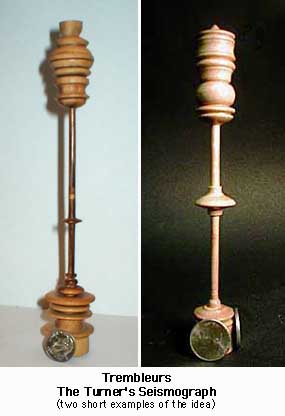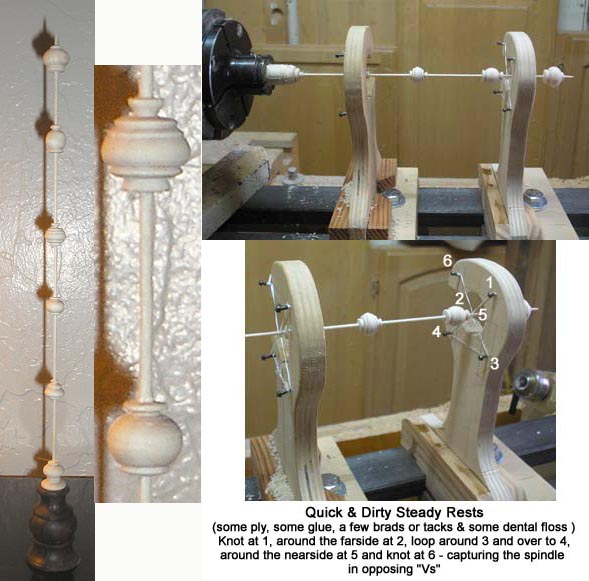Trembleurs
Leave it to the French to come up not only with a cooler sounding name than seismograph -but also to make them out of wood. Here are two examples of the idea. Now imagine that you combine them and end up with something 24 to 36 inches (60 to 90 centimeters) tall. The slightest movement will cause it to tremble - hence the name trembleur.
That's a U.S. dime at the base of the left one, two U.S. nickels at the base of the one on the right. The narrow sections of the one on the left are 1/8" (3 mm) in diameter.
- 
:
:
:
SEVERAL YEARS LATER
:
:
Thanks to several YouTube videos on termbleur turning, and having learned to turn to pretty small diameters - with a 1/4" bench chisel , an 1/8th inch parting tool made from an old bayonet saw blade (click here for a video on the technique) and some shop made "string steady rests" . . .

If you want to test your fine motor skills - and how well you can sharpen your turning tools - to say nothing of testing your nerve - turn one of these. The French usually use a "bedan" but you can use a skew - or a 1/4" bench chisel, with a bit of practice. It's a LOT easier if you have one end in a chuck, a live center on the other end with just enough pressure to begin with - and a "string support" you can move in between. Once you've turned the end, remove the tail stock. You don't want any compression on your blank. DO NOT snug up the tail center - any compression will raise all kinds of hell as you thin things down.
Once you've turned the tail stock end, remove the tailstock and start working your way back towards the chuck. Turn in short sections, sanding and finishing as you go. Support what you've turned already with the Dental Floss steady rests
If you're bored with turning knobs, spindles and hair sticks - try one of these. They're fun!
Try it. You might like it!